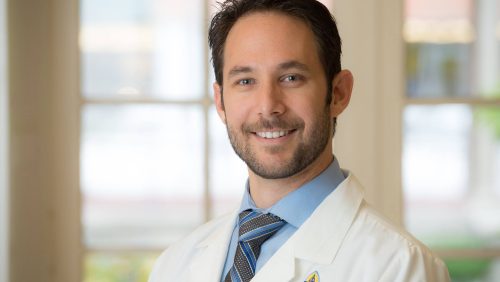
Faculty Spotlight: Jeffrey Tornheim
Assistant Professor of Medicine
“I wanted to focus on the diseases that dramatically impacted lives and carried unnecessary morbidity.”
Dr. Jeffrey Tornheim, Assistant Professor of Medicine on the infectious disease faculty, has been interested in the field since he was an undergraduate student. He collected signatures for petitions to generate support for PEPFAR and the World Health Organization’s Three by Five Initiative and helped found the Student Global AIDS Campaign chapter at Brandeis University, advocating for improved access to then-novel therapies as the HIV epidemic.
“I double majored in International Development and Economics and had become very interested in the social determinants of health,” Tornheim said. “This included an interest as the increasingly recognized HIV pandemic and its impact on people in sub-Saharan Africa.”
“When I got into medical school, I was already interested in both TB and HIV, and I was fortunate to get an internship working at the New York City Department of Health and Mental Hygiene in the Bureau of TB Control while enrolled in my combined MD/MPH program. I wanted to focus on the diseases that dramatically impacted peoples’ lives and carried unnecessary morbidity,” he explained. “I took a couple of side steps, as many of us do along the way, and spent a lot of time during my undergraduate medical training and my early graduate medical training focusing on neglected tropical diseases. I spent several years studying Chagas disease, other parasites and diagnostic tools before my combined residency in internal medicine and Pediatrics, where I alternated between caring for adults and children every few months.”
“My work sits at the intersection of cohort epidemiology and diagnostic test evaluation.”
Dr. Tornheim began working with Amita Gupta and colleagues in India in 2015, on a series of cohort and diagnostic test studies to answer two major questions: how do you make diagnostics more effective, and how do you translate them to the clinic?
He explained that if the questions of diagnosis and management of drug resistant TB in India can be answered at scale, then those answers can be applied elsewhere in the world. India has massive human resource capacity: many advanced labs for testing, highly-trained professionals who can interpret novel tests, and access to the diagnostic technologies needed to advance the field.
“My work sits at the intersection of cohort epidemiology and diagnostic test evaluation, effectively trying to translate new diagnostic tools and technologies to personalized therapy for drug resistant tuberculosis,” he said. “Ten years ago, people were really excited about the notion that sequencing could fix the diagnostic problem for TB, and it has for first line therapy, but there remains a frontier of what happens for people who face a little bit more drug resistance. Is there a space where these tools can be put into place in routine clinical practice and will that make a difference for people?”
Dr. Tornheim and his colleagues at the Hinduja Hospital have evaluated the diagnostic accuracy of culture-free sequencing methods to predict drug resistance, which can save patients from the months-long waiting periods needed to find the best drugs to treat their infections using the growth-based testing methods that represent the global standard of care. The benefit, in practice, is that people can get on the right drugs faster, with less harm and fewer side effects.
“We know that low drug levels lead to bad outcomes. We know that giving more medicine raises drug levels, but we don’t have good information that says that if we’re treating to drug level targets that we improve outcomes. But we’ve advanced enough in the field with these diagnostic tools that they’re becoming ready for those questions to be answered,” he said. “It could lead to a place where we diagnose and treat TB using the same principles that we use for every other bacterial infection, where we don’t give drugs that aren’t useful, we give the dose that’s going to be needed and try to limit toxicity as much as possible.”
“I was doing the kind of work that I always had wanted to do, seeing many patients, and hopefully making a difference in people’s lives.”
For Dr. Tornheim, seeing the downstream effects of treatment is what makes the work feel so fruitful. It has a positive impact on community, for both patients and doctors.
“I’ve cared for a lot of patients I’ve been fortunate to sit by and chat with about their disease process, to hear the pain and suffering that comes from the disease, as well as from the toxicity associated with the therapies. I get to see the joy on their faces as they start to feel better and, most importantly, move on with their lives,” he said. “It’s a great moment to tell somebody that they’re done with their TB treatments, or to see somebody in their post-treatment follow up and find that this isn’t what they’re worrying about anymore.”
“I’ve also been able to watch clinicians in training get to see those same processes for the first time and get a sense of their own developing skills. The joy that they see in taking care of their own patients who’ve gotten better, that’s another level and I’m looking forward to seeing more of that as my career advances.”